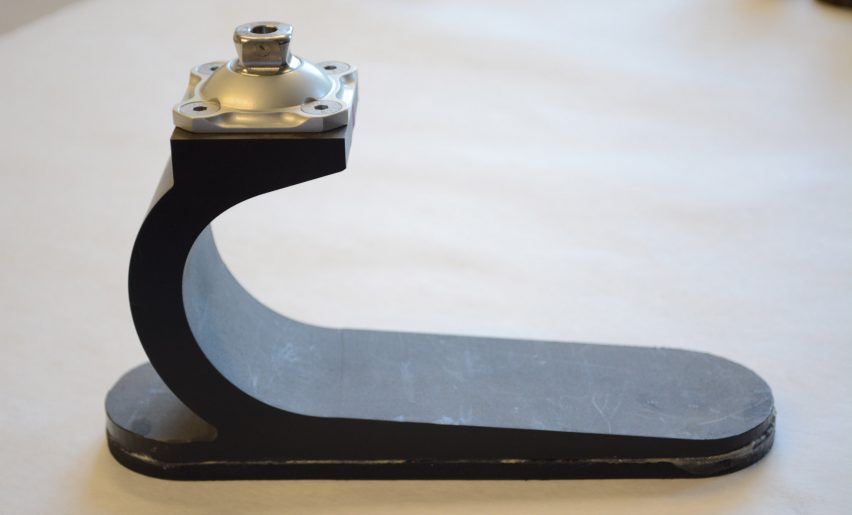Engineers from MIT have developed a streamlined prosthetic foot that lets wearers walk with a fluid motion, and can be manufactured at a low cost.
According to the Massachusetts Institute of Technology (MIT) engineers, the nylon prosthesis can be mass manufactured and easily adjusted to suit a specific user's size and weight.
The prosthetic foot was designed with amputees in low- and lower-middle-income countries in mind, but the engineers believe that their invention also has the potential to disrupt the local market in the USA.
"A common passive foot in the US market will cost $1,000 to $10,000, made out of carbon fibre," said Amos Winter, associate professor of mechanical engineering, who worked on the foot alongside project leader Kathryn Olesnavage, a former MIT graduate student.
"Imagine you go to your prosthetist, they take a few measurements, they send them back to us, and we send back to you a custom-designed nylon foot for a few hundred bucks," continued Winter. "This model is potentially game-changing for the industry, because we can fully quantify the foot and tune it for individuals, and use cheaper materials."
According to the engineers the motion that users have wearing one of these prostheses is close to that of a person walking with two feet.
To achieve this, rather than replicating the mechanics of the foot with joints at the ankle and toes, the engineers focused on approximating the overall movement of the lower leg.
This is a departure from traditional prosthetics, but Winter and his team were inspired by the feedback that amputees who have lost a limb below the knee cannot feel the specific movement of their prosthesis.
"One of the critical insights we had was that, to a user, the foot is just kind of like a black box — it's not connected to their nervous system, and they're not interacting with the foot intimately," Winter said.
"This really opened up the design space for us," he continued. "We can potentially drastically change the foot, so long as we make the the lower leg do what we want it to do, in terms of kinematics and loading, because that's what a user perceives."
The project was initiated by Jaipur Foot, an organisation that makes and donates prostheses in India. The group wanted an alternative to the lifelike but heavy and hard-to-make foot it had been manufacturing for 40 years.
In response, the researchers came up with a new framework for prosthesis design that predicts how a person will walk in response to a various artificial limbs.
To do this, they developed a mathematical model describing the prosthesis' stiffness, possible motion and shape, and combined this with existing stride data.
They then came up with their own designs. They picked the best one from among a number of contenders by running a genetic algorithm — a survival-of-the-fittest simulation that would leave only the most sure, steady foot design standing.
The toboggan-like final shape has echoes of the "blade" prostheses popularised by the 2012 Paralympics, but on a smaller scale, and in nylon rather than expensive carbon fibre.
The engineers have successfully tested their prototype with volunteers in India. "One guy ran outside, he liked it so much," said Winter.
The team is now working with the Italian footwear company Vibram, famous for the FiveFingers barefoot shoe, to develop a more lifelike covering for the apparatus.

